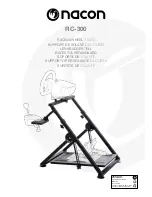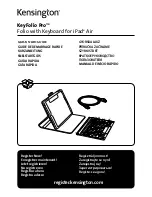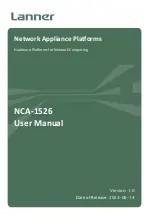
- 3 -
Battery
Insert the included batteries in the compartment at the back of the unit, please note the polarity.
The LD-215 uses two rechargeable 1.2V NiMH AA cells for backup, and can run more than 24 hours on
battery power. The batteries are continuously charged while the device is powered by the AC adapter. If
AC power is lost for an extended period and the batteries state-of-charge becomes too low, the LD-215
will alarm. The low-battery alarm is indicated by a repeating pattern of two fast beeps followed by a
pause.
NiMH rechargeable batteries
must
be used. If replacement is necessary please contact the factory.
First Use
Plug the power supply into an AC outlet and insert the rechargeable batteries.
Push the RESET button to clear the program.
Put the tip of the probe into the liquid Nitrogen to be monitored, height adjustment is available by
using the supplied Allen-wrench to adjust the shaft collar, up or down, on the probe.
After an initial beep the
“TIMING” LED should blink green (if it blinks yellow go to page 1
“Setting
the Trip P
oint”).
Test the installation by sliding the probe up until it is no longer submerged.
The
“TIMING”LED will start to blink yellow within 10 seconds. This indicates that the probe is
registering an alarm level.
After the alarm-delay period, the red
“ALARM” LED will blink, and the beeper will sound and the
output relay will change state.
Care and Maintenance
The LD-215 case can be cleaned with a soft dry cloth. Avoid harsh chemicals including alcohols as they
may permanently mar the case surface.
Periodically inspect the probe and power supply cables and connections for damage. Although the probe
cable is jacked in PTFE (Teflon
®
), a highly resilient plastic, the temperature of liquid nitrogen does cause
the material to stiffen. AVOID quickly flexing any cable that has been directly exposed to LN2 liquid until
it has time to warm up.
The LD-215 should be recalibrated periodically as electronic device parameters may drift over time.
Simply follow the instructions found on the first page in the section title
d “
Setting the Trip Point
”. After
recalibrating, pull the probe tip up out of the liquid (one inch or less above the surface) and wait for the
device to alarm.
Verify that the “ALARM” LED flashes, the beeper sounds, and the relay changes state.
To avoid a lengthy wait, you may want to set the alarm delay to zero before the test and then return it to
the desired setting when complete.
The batteries may be tested periodically by unplugging the power supply and allowing the unit to run on
battery power for 5-10 minutes. If the LD-215 fails to operate, or if the low battery alarm activates, the
batteries should be replaced. The batteries should be replaced every 3-5 years.





















